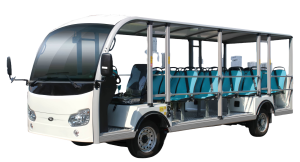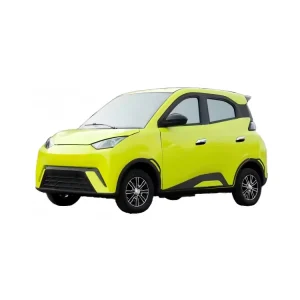Introdução
Nos últimos anos, a popularidade pequenos veículos elétricos surgiu, particularmente em comunidades residenciais, localidades e campos de golfe. No entanto, muitas vezes surge confusão quanto às distinções entre carros de golf, Veículos de baixa velocidade (LSV)s), e Veículos elétricos da vizinhançaEste artigo tem como objetivo esclarecer essas diferenças, focando em seu design, classificações legais e tendências de mercado.
Carros de Golf
Definição e Design
Originalmente projetado para transportar golfistas e seu equipamento em torno de campos de golfe, carros de golf são pequenos veículos motorizados. Eles geralmente têm uma velocidade máxima de 15-20 mph e podem faltar características essenciais de segurança como cintos de segurança, luzes de frente e sinais de viragem.
Estado jurídico
Em muitas regiões, carros de golf não são legales na rua. Por exemplo, em Livônia, Michigan, operando um carro de golf nas estradas públicas sem registo adequado podem resultar em multas.

Veículos de baixa velocidade
Definição e Design
LSVs são veículos de quatro rodas com uma velocidade máxima entre 20 e 25 mph. Eles são projetados para cumprir padrões específicos de segurança, incluindo cintos de segurança, faros e sinais de viragem.
Estado jurídico
Nos Estados Unidos, LSVs são legales em estradas com limites de velocidade de 35 mph ou menos, desde que cumpram os padrões federais de segurança.
Trends do mercado
A América do Norte LSV o mercado está experimentando crescimento significativo. Em 2024, o mercado foi valorizado em aproximadamente 4,17 bilhões de dólares e é projetado alcançar 6,85 bilhões de dólares em 2030, crescendo a uma taxa de crescimento anual composta (CAGR) de 8,9%.
![O quadriciclo de passageiros elétricos de[UNK]A901redefini a mobilidade urbana com sua mistura de poder, conforto e inteligência. Designado para famílias e grupos pequenos, este veículo de 4 portas e 4 lugares tem um motor de AC robusto 72V3000W, fornecendo uma velocidade máxima de 45 km/h e uma gama de ≥90 km por carga. Suas dimensões compactas (2810*1316*1509 mm) asseguram navegação a ília da cidade enquanto atendem às diversas necessidades – desde transporte idoso e navegações médicas para a logística do comércio electrónico rural. Certificado nos padrões CEE/COC/L7e-CP, o A901 combina certificações de segurança com comodidades modernas como uma câmera de retrovisão, aquecedor e janelas de energia, tornando cada jornada eficiente e sem preocupação.](https://www.tairuiauto.com/wp-content/uploads/2025/06/1-300x300.jpg)
Veículos elétricos da vizinhança
Definição e Design
NEV são um subseto de LSVsespecificamente projetado como veículos elétricos de bateriaParecem carros de golfe mas estão equipados com características de segurança necessárias e têm uma velocidade máxima de até 25 mph.
Estado jurídico
NEV pode ser legalmente operado na maioria das estradas públicas onde o limite de velocidade postado é de 35 mph ou menos, sujeito a regulamentos específicos do Estado.
Trends do mercado
O global veículo elétrico de baixa velocidade mercado, que inclui NEV, é projetado crescer de 10,57 bilhões de dólares em 2025 para 36,52 bilhões de dólares em 2034, expandindo-se em um CAGR de 14,81%.

🔍 Diferenças chave em um olhar
| Característica | Cart ão de Golf | Veículo de baixa velocidade (LSV) | Veículo elétrico da vizinhança (NEV) |
| Velocidade máxima | 15-20 mph | 20-25 mph | Até 25 mph |
| Características de segurança | Minimal | Requerido (cintos de segurança, luzes) | Requisito (elétrico, emissão zero) |
| Legalidade da rua | Limitado ou nenhum | Sim, com restrições | Sim, com restrições |
| Fonte de energia | Gasolina ou elétrica | Eletrico | Eletrico |
| Usos Comum | Campos de golfe, caminhos privados | comunidades portadas, localidades | Viagens urbanas de curta distância |
Conclusão
Os miniveículos elétricos produzidos pelo Grupo Tairui pode satisfazer plenamente as necessidades de compra dos clientes. Entender as distinções entre carros de golf, LSVse NEV é crucial tanto para os consumidores como para os reguladores. À medida que a demanda de pequenos veículos elétricos continua a crescer, manter-se informado sobre suas classificações legais e tendências de mercado irá garantir uso seguro e informado.
